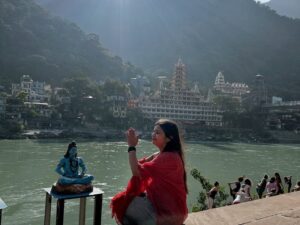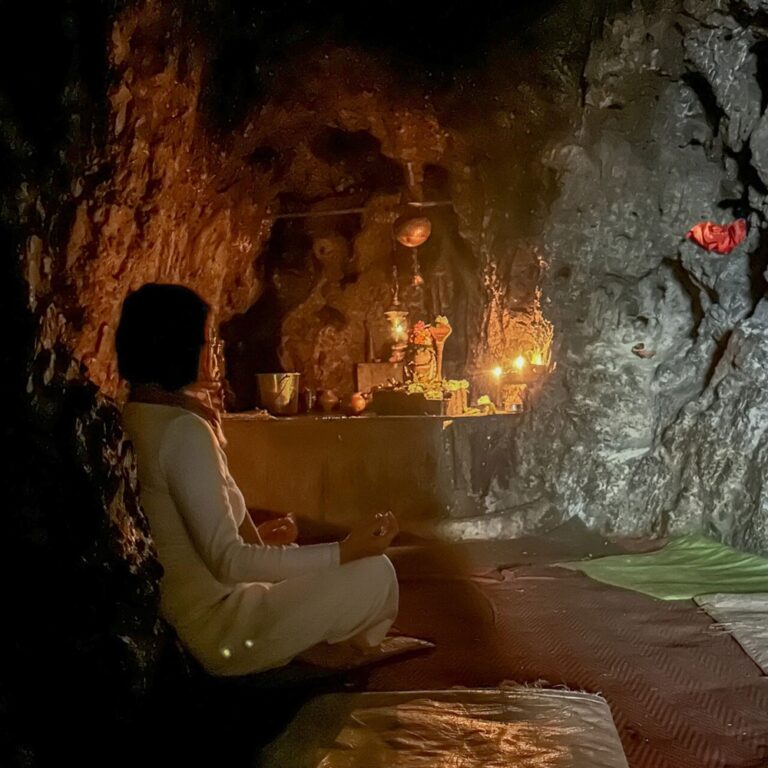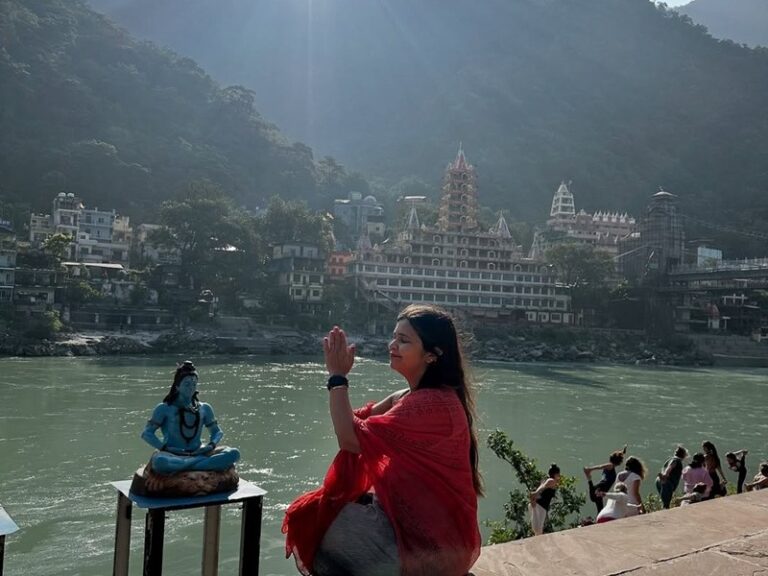Discover Taj Mahal City, Agra in India and Ticket for Taj Mahal
The Taj Mahal city is famous for an exquisite mausoleum located in Agra, India, is celebrated globally as one of the Seven Wonders of the World and was designated a UNESCO World Heritage Site in 1983. Commissioned by the Mughal Emperor Shah Jahan—who reigned from 1628 to 1658—the Taj Mahal exemplifies refined Islamic art and is considered the pinnacle of Islamic funerary architecture. Taj Mahal City
History of the Taj Mahal
The origins of the Taj Mahal are deeply rooted in a tale of devotion and love between an emperor and his beloved. Shah Jahan, an emperor from the Mughal dynasty, commissioned the mausoleum in honor of his wife, Arjumand Banu, better known as Mumtaz Mahal. Taj Mahal City
She died shortly after giving birth to their daughter during a military campaign in South India. Historical accounts state that, in 1631, six months after Mumtaz Mahal’s death in Burhanpur, her remains were transferred to Agra and temporarily placed in a crypt near the mausoleum’s future site. Shah Jahan declared that the mausoleum should be the grandest tribute to a woman ever built. Taj Mahal City
While the exact architect of the Taj Mahal remains uncertain, it is widely believed that Ustad Ahmad Lahori, who had previously been involved in other major Mughal projects, was instrumental in its design. Taj Mahal City
The construction, which began in 1631, lasted for seventeen years, involving approximately 20,000 workers and over 1,000 elephants. A temporary city, Mumtazabad, was established to support the workforce, eventually becoming almost as significant as Agra itself. Taj Mahal City
The mausoleum’s construction required a vast amount of materials, including marble, precious stones like crystal, jade, lapis lazuli, and turquoise, as well as coral, shells, and mother-of-pearl. Taj Taj Mahal City Mahal City

Architectural Structure and Symbolism
The Taj Mahal is situated within a vast square garden, a design typical of Islamic architecture, symbolizing divine beauty. The main entrance opens into a large courtyard leading to the mausoleum, through which visitors pass a grand red sandstone gate adorned with intricate arabesques and inscriptions from the Quran in white marble. Taj Mahal City
The mausoleum is a striking white marble structure set upon a raised red sandstone base and features a massive dome that rises to 26 meters in height and 18 meters in diameter. Four minarets, positioned at the corners of the mausoleum, frame the entire complex. Taj Mahal City
Surrounding the mausoleum are two grand mosques constructed from red sandstone, topped with marble domes. The mosque on the west side, with three domes, is elaborately decorated, while the mosque on the east is identical but was likely built purely for aesthetic symmetry. Taj Mahal City
Inside the mausoleum, the cenotaphs of Mumtaz Mahal and Shah Jahan lie in the central chamber, surrounded by exquisitely decorated mosaic tiles featuring precious stones. The actual tombs are reportedly located in a lower chamber, or some believe they are hidden in the palace’s foundations. Taj Mahal City
Suggested Read: Taj Mahal Hours: Opening and Closing Time
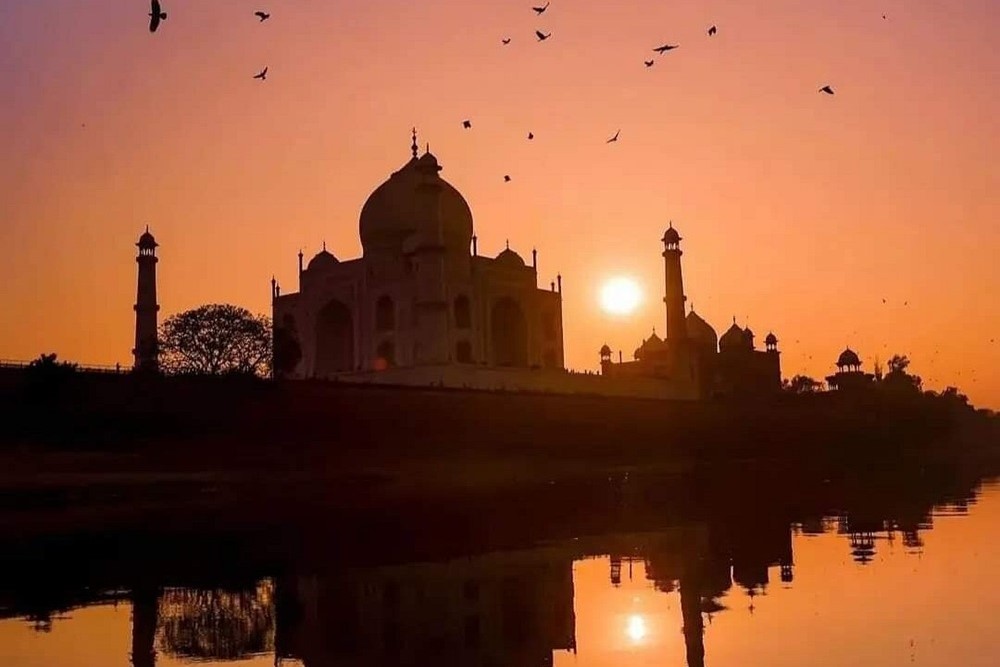
Legends Surrounding the Taj Mahal
A popular legend suggests that the name Taj Mahal (translating to “Crown of the Palace”) might be an abbreviation of Mumtaz Mahal’s name. Mumtaz Mahal, born Arjumand Banu Begum, was a noblewoman of Agra and Shah Jahan’s third wife. She was cherished for her beauty, virtue, and dedication. Taj Mahal City
During her final moments, she reportedly asked Shah Jahan to build an unparalleled mausoleum in her honor, not remarry, and to always visit the monument on the anniversary of her death. Taj Mahal City
Following her death, Shah Jahan is said to have mourned deeply, his hair turning white from grief. He fulfilled his promise by commissioning the Taj Mahal, ensuring it stood as a timeless testament to their love. Taj Mahal City
Experience the Taj Mahal
Visiting the Taj Mahal offers an opportunity to immerse oneself in a profound historical and spiritual experience. For a deep dive into the rich history and beauty of Agra, consider exploring through Agra Walks, which offer unique insights into the lesser-known aspects of the city. Taj Mahal City
Additionally, the Kalakriti Cultural Centre provides a dramatic reenactment of the love story between Shah Jahan and Mumtaz Mahal. Taj Mahal City
Don’t miss the chance to witness this extraordinary monument and the enchanting city of Agra, where every corner tells a story of love and legacy. The Taj Mahal awaits to captivate and inspire you with its timeless beauty and historical significance. Taj Mahal City
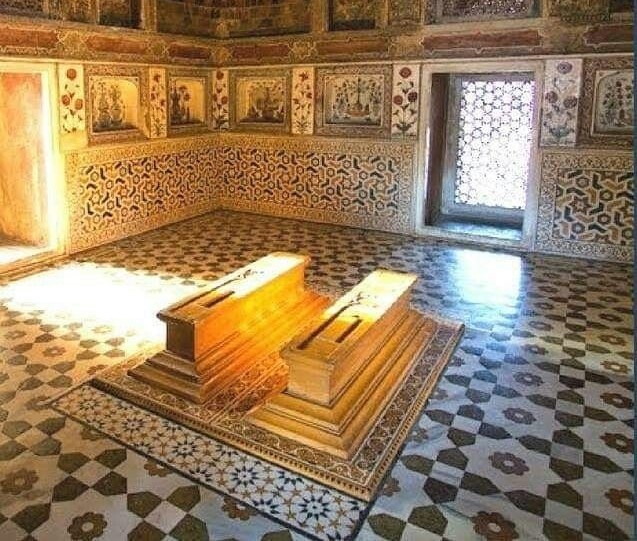
Here’s a comprehensive guide to the entry tickets and fees for various monuments in Agra:
Ticket for Taj Mahal and Fees
Taj Mahal: Ticket for Taj Mahal
- Indian: ₹50 (Weekdays), CLOSED (Friday)
- Foreigner/NRI: ₹1100 (Weekdays), CLOSED (Friday)
- SAARC/BIMSTEC: ₹540 (Weekdays), CLOSED (Friday)
- Additional Fee for Main Mausoleum: ₹200 (Applicable to all categories)
Agra Fort: Ticket for Taj Mahal
- Indian: ₹50 (Weekdays), ₹40 (Friday)
- Foreigner/NRI: ₹650 (Weekdays), ₹600 (Friday)
- SAARC/BIMSTEC: ₹90 (Weekdays), ₹40 (Friday)
Fatehpur Sikri: Ticket for Taj Mahal
- Indian: ₹50 (Weekdays), ₹40 (Friday)
- Foreigner/NRI: ₹610 (Weekdays), ₹600 (Friday)
- SAARC/BIMSTEC: ₹50 (Weekdays), ₹40 (Friday)
Akbar’s Tomb, Sikandra: Ticket for Taj Mahal
- Indian: ₹30 (Weekdays), ₹25 (Friday)
- Foreigner/NRI: ₹310 (Weekdays), ₹300 (Friday)
- SAARC/BIMSTEC: ₹30 (Weekdays), ₹25 (Friday)
Itimad-Ud-Daulah: Ticket for Taj Mahal
- Indian: ₹30 (Weekdays), ₹25 (Friday)
- Foreigner/NRI: ₹310 (Weekdays), ₹300 (Friday)
- SAARC/BIMSTEC: ₹30 (Weekdays), ₹25 (Friday)
Mehtab Bagh: Ticket for Taj Mahal
- Indian: ₹25 (Weekdays), ₹25 (Friday)
- Foreigner/NRI: ₹300 (Weekdays), ₹300 (Friday)
- SAARC/BIMSTEC: ₹25 (Weekdays), ₹25 (Friday)
Ram Bagh : Ticket for Taj Mahal
- Indian: ₹25 (Weekdays), ₹25 (Friday)
- Foreigner/NRI: ₹300 (Weekdays), ₹300 (Friday)
- SAARC/BIMSTEC: ₹25 (Weekdays), ₹25 (Friday)
Mariyam’s Tomb : Ticket for Taj Mahal
- Indian: ₹25 (Weekdays), ₹25 (Friday)
- Foreigner/NRI: ₹300 (Weekdays), ₹300 (Friday)
- SAARC/BIMSTEC: ₹25 (Weekdays), ₹25 (Friday)
Additional Information: Ticket for Taj Mahal
- No entry fee for children below 15 years (both Indian & Foreigner).
- Taj Mahal is closed on Fridays.
- Ticket Purchase: Tickets for Taj Mahal and other monuments can be bought online through www.asiagracircle.in and www.tajmahal.gov.in. Ticket windows open one hour before sunrise and close 45 minutes before sunset.
- Drone Cameras: Strictly prohibited inside the Taj Mahal.
- Identity Proof: Tourists must carry government-issued ID.
- Facilities for Foreigners: Includes shoe cover, water bottle, tourist guide map, battery bus, and golf cart services. Shoe racks are available below the main mausoleum.
- Cloak Rooms: Available at both gates of the Taj Mahal.
For any issues related to ticketing, complaints should be addressed to the Archaeological Survey of India. The U.P. Tourism department does not handle ticket-related concerns but can provide other tourist information.



